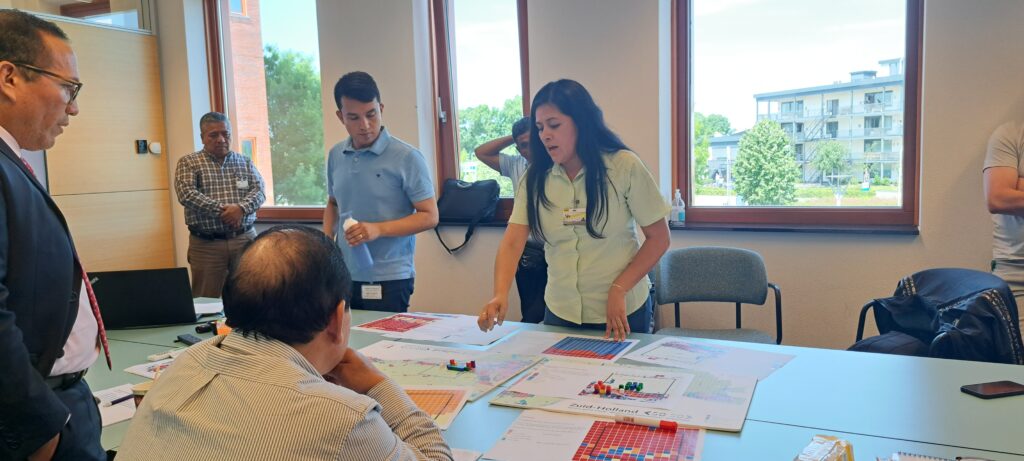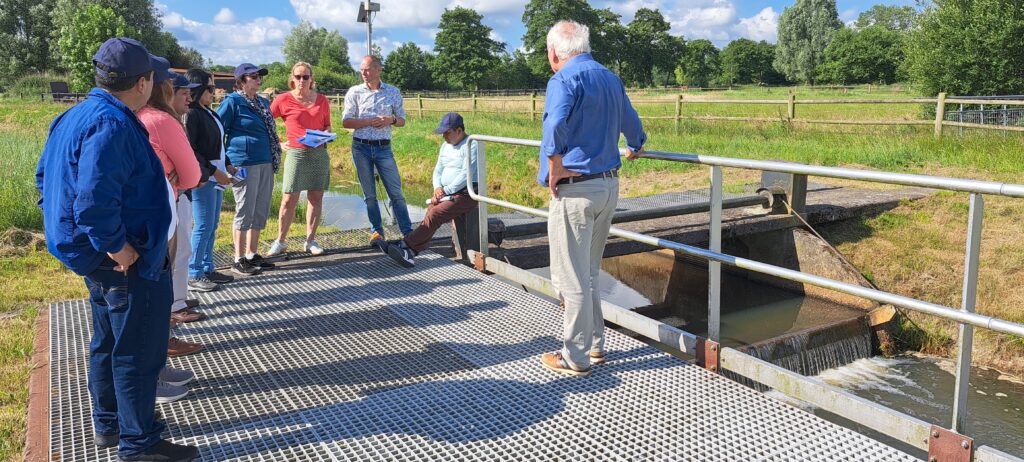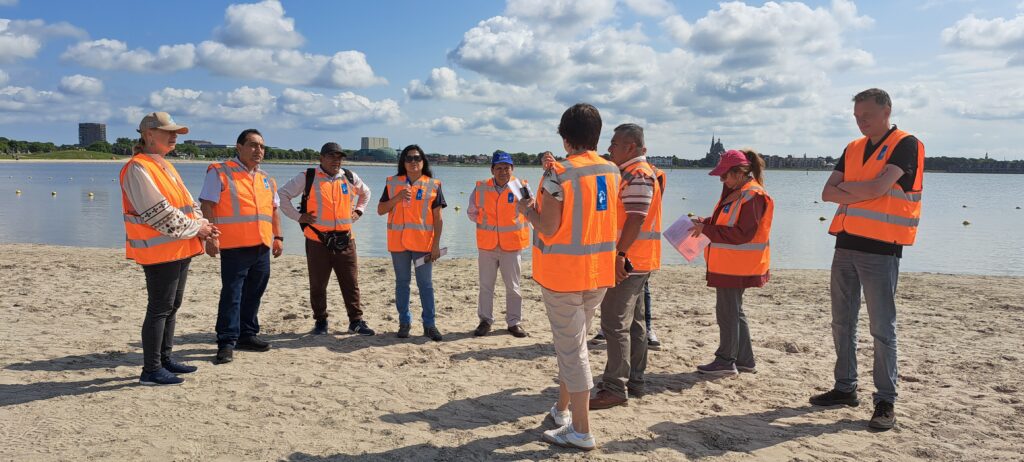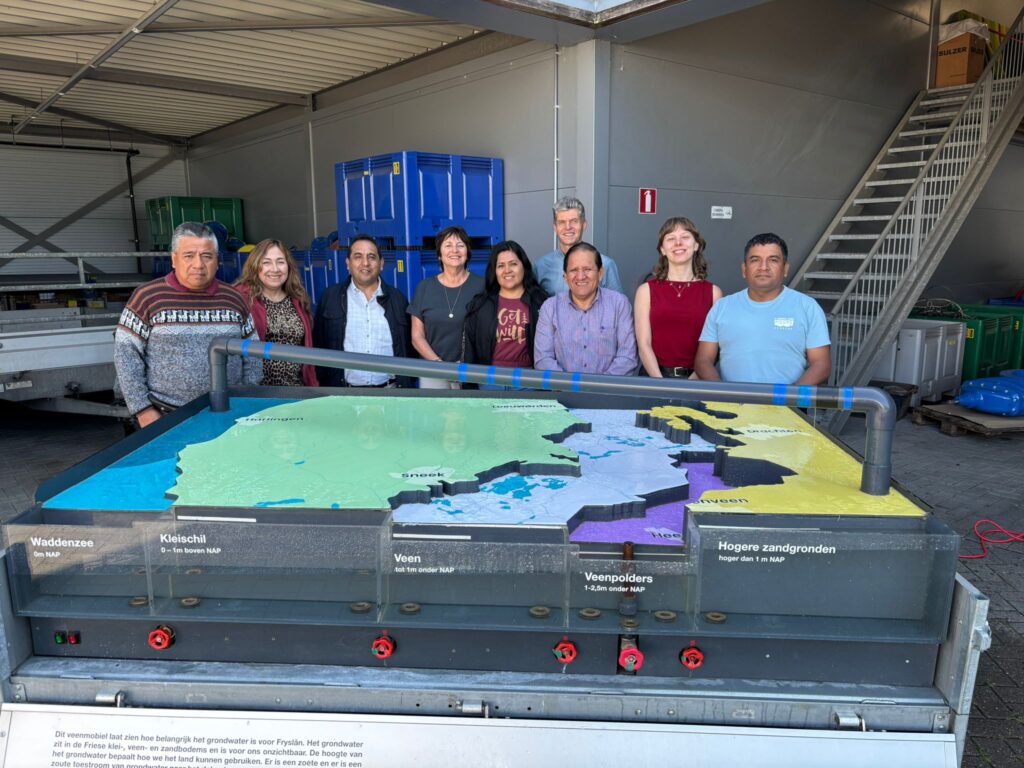As part of the Blue Deal Peru project, six water experts from the Peru's National Water Authority (ANA) and the Binational Project Puyango-Tumbes visited the Netherlands from 16 to 20 June. This working visit fostered a dynamic exchange of experiences between Peruvian and Dutch water authorities, focusing on governance, climate-resilient water management and institutional coordination.
They were representatives from the National, Regional and Local authorities responsible for the planning and implementation of the National Water Resources Management Systems, the water distribution plans in the regions, institutional coordination within the Watershed Councils and execution of strategic regional-based water projects.
The five-day programme was jointly organised with the delegation and by various Dutch Water Authorities. The programme included relevant themes for the activities and challenges faced by our partners in Lima, and in the regions of Piura and Tumbes. These areas are particularly vulnerable to floods and droughts, so particular attention was given to water safety and flood control, water governance and institutional arrangements for management and distribution plans among different water uses in the context of climate change.
Key Themes and Insights
Water Governance and Institutional Roles
A recurring theme throughout the visit was the importance of effective governance structures. Discussions highlighted the role of board members in Dutch water authorities, such as at Rivierenland, where Melinda Boons explained how elected officials contribute to strategic planning and stakeholder engagement. This sparked meaningful dialogue on how similar governance models could enhance institutional coordination and accountability in Peru’s water management system. At Noorderzijlvest water authority, Director Bas Tammes led a discussion with the Peruvian and Dutch colleagues what mutual learnings could be taken from each other’s processes. Topics of interest were: governance structures, interaction with board members, finances, management and water distribution plans in the Netherlands and in Peru.
Interactive Learning through Serious Games
To explore the complexities of water planning through a practical approach, the delegation participated in a serious game simulating the role of city and environmental planners. This hands-on experience emphasised the importance of balancing competing interests, managing stakeholder dynamics, and planning under climate stress – lessons that resonated with the Peruvian context.

Pictured: The delegation plays a Serious Game
Climate Adaptation and Resilience
The delegation had the opportunity to explore several innovative Dutch projects focused on climate resilience. At Noorderzijlvest, they visited De Onlanden project – a great example of nature-based solutions that integrate climate adaptation, flood protection for the city of Groningen, and opportunities for nature and recreation. Additional water retention measures were showcased in the surrounding area of Veenhuizen (Drenthe), where collaboration with local farmers plays a key role.

The group also showed great interest in learning about the construction techniques, materials, and maintenance practices used in these projects, including the challenges posed by dike systems along the Wadden Sea coast, which serve as a critical line of defense.
These experiences underscored the potential of land use changes and the importance of considering diverse water interests – agriculture, urban development, and ecosystems – especially under the growing pressures of climate change. They illustrated how infrastructure, spatial planning, and community engagement can be effectively aligned to enhance both flood safety and drought resilience.

Pictured: A visit to Markermeerdijk in North Holland with colleagues from Hoogheemraadschap Hollands Noorderkwartier
Dutch Water Engineering in Practice
In addition to governance and climate adaptation, the delegation explored the technical foundations of Dutch water management. They learned about the critical role of pumping stations and traditional water mills in regulating water levels in the polders – low-lying tracts of land reclaimed from the sea.
A particularly memorable moment came during a visit to North Holland, where the group discovered that some areas lie as deep as 6.63 meters below sea level. This striking fact offered a powerful illustration of the Netherlands’ long-standing expertise in living with water and left a lasting impression on the Peruvian experts.
International Collaboration and Mutual Learning
The exchange underscored the shared challenges both countries face – ranging from localised droughts to institutional fragmentation – and the value of international cooperation, highlighted by Tjitske Brand from the management team of Wetterskip Fryslân. The delegation left with new perspectives and practical ideas to strengthen Peru’s water governance and resilience strategies.
This visit is part of the Multi-Annual Plan (MAP) 2023–2030 of the Blue Deal Peru Project and reflects the ongoing collaboration between ANA and Dutch Water Authorities, coordinated by Waterschap Noorderzijlvest.

Pictured: The Peruvian delegation with the Peat Mobile at Wetterskip Fryslan
